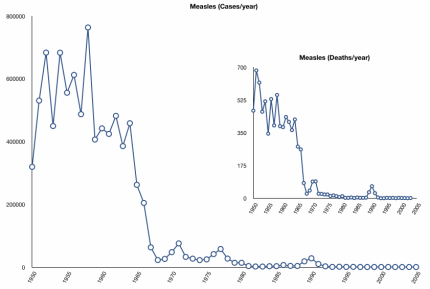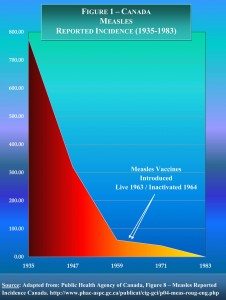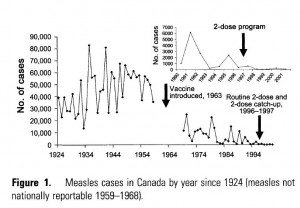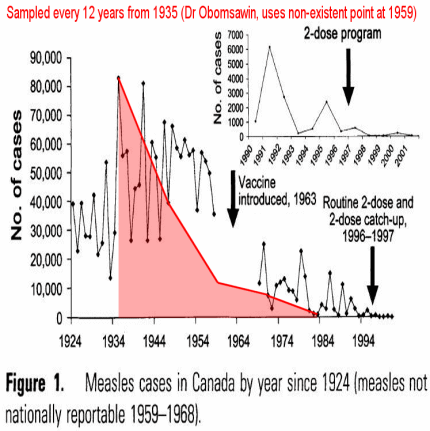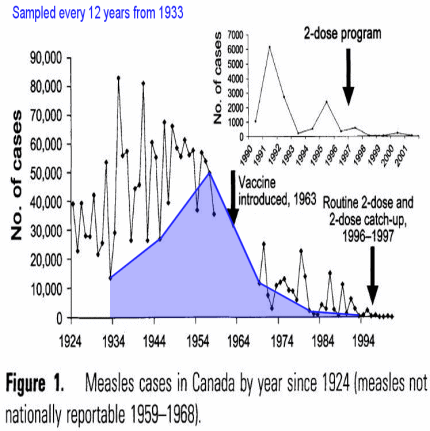Study: Some Autistic Brains Really Are Wired Differently
Too many tight connections in frontal-lobe circuits and too few long-distance links between the frontal lobe and the rest of the brain may cause some of the language, social problems and repetitive behavior seen in autism spectrum disorders, according to a new study published in Science Translational Medicine. The research links a variant of the CNTNAP2 gene to this particular type of rewiring in the brain.
The new findings, which used functional magnetic resonance imaging (fMRI) to measure the types and strength of connections between brain regions, could provide autism experts with some important clues for early intervention and treatment. (More on Time.com: Special Report: Kids and Mental Health)
"I think it is quite a beautiful study," says Kamila Markram, director of the Autism Project at the Brain Mind Institute of the École Polytechnique Fédérale de Lausanne in Switzerland, who was not associated with the current research. "What's new is that it brings the genetic data together with the functional brain activity and that is usually not done. Either people look at gene expression or they look at functional brain activity. To bring them together and relate them to say, 'That particular gene is responsible for the different connection pattern that one observes,' that's a unique research area and that's the beauty of the study."
The gene produces a protein called CASPR1 and is active during brain development — mostly during frontal-lobe development. "During early development, it is localized to parts of brain that are 'more evolved' — areas where learning and language happen, the frontal lobes where really complex thinking takes place," says Ashlee Scott-van Zeeland, a postdoctoral fellow at the Scripps Translational Science Institute in La Jolla, Calif., and lead author of the study. "[It is] thought to help structure the brain." The gene also influences the development of reward regions of the brain, which are involved in motivation, pleasure and learning. (More on TIME.com: Is Picky Eating an Early Sign of Autism?)
For the new study, researchers compared 32 autistic and typically developing children, aged 11 to 13. Some had an autism-risk variant of CNTNAP2, while others had a non-risk variant. In the sample, the non-autistic children were just as likely to have the risk variant as the autistic children. Indeed the CNTNAP2 gene, which 1 in 3 people in the general population carry, doesn't guarantee autism — the gene is only one of many risk factors involved in the disorder. "In autism, there are many roads to Rome," explains Scott-van Zeeland. "You can have some of the common risk variants and they all stack up. [Only] if you have enough of them [will you] fall over edge."
All the kids underwent an fMRI scan. While in the scanner, the kids played a learning-related game that gave them monetary rewards for correct answers. The task was chosen because it activated many of the brain regions affected by CNTNAP2, including those involved in reward. (More on Time.com: 1 in 5 Kids With an Autistic Sibling Show Subtle Symptoms Too).
Regardless of autism diagnosis, the children with autism-risk variants showed different patterns of activity within the frontal lobe and between the frontal lobe and the rest of the brain. During the task, they showed more activity throughout the frontal cortex. For example, they had increased activity in the medial prefrontal cortex, which normally tends to be active when the brain is not engaged in a task; carriers of the risk variant showed less decrease in activity during the game than those without the risk variant. (More on TIME.com: Genetic Testing for Autism)
In children with the non-risk variant of CNTNAP2, brain pathways more strongly linked the frontal regions to parts of the left side of the brain, areas that typically specialize in language. In risk-variant carriers, the frontal lobe was connected more diffusely to both sides of the brain, which may help explain why the variant can be associated with delays in speech.
In addition, children without the risk variant had better long-range connections between brain regions — from the front to the back of the brain, for example. There were no differences in IQ associated with the risk variant alone.
CNTNAP2 — pronounced catnap two — is "a really interesting gene," says Scott-van Zeeland. It was first discovered in a family whose members suffered from obsessive-compulsive disorder and Tourette's syndrome (symptoms of both disorders are also frequently seen in autism). The same gene has also been linked to ADHD, schizophrenia and a language disorder known as Specific Language Impairment. (More on Time.com: A Five-Minute Brain Scan Tracks Kids' Development and May Spot Disorders).
"Genes do not code for diagnoses. They code for proteins, which then go about creating an effect," says Nancy Minshew, professor of psychiatry and neurology at the University of Pittsburgh, who has done prior research on brain connectivity in autism but was not associated with the current research. "Hence the same genes may be seen in clinically related disorders." All of the related disorders involve problems with directing attention and controlling behavior.
The new findings lend support to the "intense world" theory of autism, which has posited that patterns of brain circuitry that result in excessive functioning in some regions may lead to extremes in attention and perception, which can produce both the deficits — and the sometimes extraordinary intellectual talents — that characterize some people with autism. (More on TIME.com: Is Anorexia a 'Female' Form of Autism?)
In a brain wired with hyper-local connections, those regions would be prone to hyperactivity; in turn, the excess activity leads to hyper-responsiveness to incoming information and quick learning. "They react more to stimulation than normal circuits. And not only do they react too much, they also learn too much," says Markram, an author of the intense world theory.
Although that sounds like it could be a good thing — it may well explain the abilities of autistic savants, who are extremely gifted in mathematics, computer science or music — in the context of decreased long-term connections between brain regions, the end result can be overwhelming. Indeed, many people with autism describe being incapacitated by sensory experiences — whether they are bright lights, loud noises or social interactions.
"At a psychological level, basically, it would mean that the autistic person could feel, perceive and learn too much. That could lead to sensory overload, as well as consequences like social avoidance or withdrawal and repetitive behavior," says Markram. Autistic people tend to use these behaviors to keep their world the same, and to keep an overly intense world at bay.
"If you have too much noise — all that talking that's going on in the frontal lobes — it might be hard to figure out what sources of information to pay attention to," says Scott-van Zeeland. "To figure out what's going on requires these long-term connections."
Still, in the absence of other genes or environmental risk factors that lead to full blown autism, the pattern of brain connections associated with the risk variant of CNTNAP2 may carry certain advantages. "It would be really exciting to see what would be the strengths of this kind of connectivity pattern," says Scott-van Zeeland. "A lot of people carry this variation — if it weren't beneficial in some way, you would expect it to disappear."
Going forward, researchers may focus on using the new information to improve early autism interventions. Early brain development is complex and shaped by environmental signals, but a brain that is paralyzed by sensory overload misses early social cues, which may change the entire course of its development. So autistic children may have social problems not because their social brains are defective, but because sensory overload and the methods children use to cope with it prevent them from absorbing and understanding the information they need to develop socially.
Early social intervention could help prevent — or at least significantly mitigate — the disability associated with autism. "If you can identify these early brain signals and know what the problem is, you can do more intensive therapy," Scott van-Zeeland says. "A child's brain is so flexible. So instead of letting a child obsess over trains, you could spend a lot more time teaching them to pay attention to mom's face and trying to get that be rewarding. Once we find out what circuits are not automatically doing what they should, if you can explicitly tell them what they should do, that would go a really long way.”
As autism researcher David Mandell told the New York Times this week in a story on early autism intervention:
The new findings, which used functional magnetic resonance imaging (fMRI) to measure the types and strength of connections between brain regions, could provide autism experts with some important clues for early intervention and treatment. (More on Time.com: Special Report: Kids and Mental Health)
"I think it is quite a beautiful study," says Kamila Markram, director of the Autism Project at the Brain Mind Institute of the École Polytechnique Fédérale de Lausanne in Switzerland, who was not associated with the current research. "What's new is that it brings the genetic data together with the functional brain activity and that is usually not done. Either people look at gene expression or they look at functional brain activity. To bring them together and relate them to say, 'That particular gene is responsible for the different connection pattern that one observes,' that's a unique research area and that's the beauty of the study."
The gene produces a protein called CASPR1 and is active during brain development — mostly during frontal-lobe development. "During early development, it is localized to parts of brain that are 'more evolved' — areas where learning and language happen, the frontal lobes where really complex thinking takes place," says Ashlee Scott-van Zeeland, a postdoctoral fellow at the Scripps Translational Science Institute in La Jolla, Calif., and lead author of the study. "[It is] thought to help structure the brain." The gene also influences the development of reward regions of the brain, which are involved in motivation, pleasure and learning. (More on TIME.com: Is Picky Eating an Early Sign of Autism?)
For the new study, researchers compared 32 autistic and typically developing children, aged 11 to 13. Some had an autism-risk variant of CNTNAP2, while others had a non-risk variant. In the sample, the non-autistic children were just as likely to have the risk variant as the autistic children. Indeed the CNTNAP2 gene, which 1 in 3 people in the general population carry, doesn't guarantee autism — the gene is only one of many risk factors involved in the disorder. "In autism, there are many roads to Rome," explains Scott-van Zeeland. "You can have some of the common risk variants and they all stack up. [Only] if you have enough of them [will you] fall over edge."
All the kids underwent an fMRI scan. While in the scanner, the kids played a learning-related game that gave them monetary rewards for correct answers. The task was chosen because it activated many of the brain regions affected by CNTNAP2, including those involved in reward. (More on Time.com: 1 in 5 Kids With an Autistic Sibling Show Subtle Symptoms Too).
Regardless of autism diagnosis, the children with autism-risk variants showed different patterns of activity within the frontal lobe and between the frontal lobe and the rest of the brain. During the task, they showed more activity throughout the frontal cortex. For example, they had increased activity in the medial prefrontal cortex, which normally tends to be active when the brain is not engaged in a task; carriers of the risk variant showed less decrease in activity during the game than those without the risk variant. (More on TIME.com: Genetic Testing for Autism)
In children with the non-risk variant of CNTNAP2, brain pathways more strongly linked the frontal regions to parts of the left side of the brain, areas that typically specialize in language. In risk-variant carriers, the frontal lobe was connected more diffusely to both sides of the brain, which may help explain why the variant can be associated with delays in speech.
In addition, children without the risk variant had better long-range connections between brain regions — from the front to the back of the brain, for example. There were no differences in IQ associated with the risk variant alone.
CNTNAP2 — pronounced catnap two — is "a really interesting gene," says Scott-van Zeeland. It was first discovered in a family whose members suffered from obsessive-compulsive disorder and Tourette's syndrome (symptoms of both disorders are also frequently seen in autism). The same gene has also been linked to ADHD, schizophrenia and a language disorder known as Specific Language Impairment. (More on Time.com: A Five-Minute Brain Scan Tracks Kids' Development and May Spot Disorders).
"Genes do not code for diagnoses. They code for proteins, which then go about creating an effect," says Nancy Minshew, professor of psychiatry and neurology at the University of Pittsburgh, who has done prior research on brain connectivity in autism but was not associated with the current research. "Hence the same genes may be seen in clinically related disorders." All of the related disorders involve problems with directing attention and controlling behavior.
The new findings lend support to the "intense world" theory of autism, which has posited that patterns of brain circuitry that result in excessive functioning in some regions may lead to extremes in attention and perception, which can produce both the deficits — and the sometimes extraordinary intellectual talents — that characterize some people with autism. (More on TIME.com: Is Anorexia a 'Female' Form of Autism?)
In a brain wired with hyper-local connections, those regions would be prone to hyperactivity; in turn, the excess activity leads to hyper-responsiveness to incoming information and quick learning. "They react more to stimulation than normal circuits. And not only do they react too much, they also learn too much," says Markram, an author of the intense world theory.
Although that sounds like it could be a good thing — it may well explain the abilities of autistic savants, who are extremely gifted in mathematics, computer science or music — in the context of decreased long-term connections between brain regions, the end result can be overwhelming. Indeed, many people with autism describe being incapacitated by sensory experiences — whether they are bright lights, loud noises or social interactions.
"At a psychological level, basically, it would mean that the autistic person could feel, perceive and learn too much. That could lead to sensory overload, as well as consequences like social avoidance or withdrawal and repetitive behavior," says Markram. Autistic people tend to use these behaviors to keep their world the same, and to keep an overly intense world at bay.
"If you have too much noise — all that talking that's going on in the frontal lobes — it might be hard to figure out what sources of information to pay attention to," says Scott-van Zeeland. "To figure out what's going on requires these long-term connections."
Still, in the absence of other genes or environmental risk factors that lead to full blown autism, the pattern of brain connections associated with the risk variant of CNTNAP2 may carry certain advantages. "It would be really exciting to see what would be the strengths of this kind of connectivity pattern," says Scott-van Zeeland. "A lot of people carry this variation — if it weren't beneficial in some way, you would expect it to disappear."
Going forward, researchers may focus on using the new information to improve early autism interventions. Early brain development is complex and shaped by environmental signals, but a brain that is paralyzed by sensory overload misses early social cues, which may change the entire course of its development. So autistic children may have social problems not because their social brains are defective, but because sensory overload and the methods children use to cope with it prevent them from absorbing and understanding the information they need to develop socially.
Early social intervention could help prevent — or at least significantly mitigate — the disability associated with autism. "If you can identify these early brain signals and know what the problem is, you can do more intensive therapy," Scott van-Zeeland says. "A child's brain is so flexible. So instead of letting a child obsess over trains, you could spend a lot more time teaching them to pay attention to mom's face and trying to get that be rewarding. Once we find out what circuits are not automatically doing what they should, if you can explicitly tell them what they should do, that would go a really long way.”
As autism researcher David Mandell told the New York Times this week in a story on early autism intervention:
What you ultimately might be doing is preventing a certain proportion of autism from ever emerging ... I'm not saying you're curing these kids, but you may be changing their developmental trajectory enough by intervening early enough that they never go on to meet criteria for the disorder. And you can't do that if you keep waiting for the full disorder to emerge.

